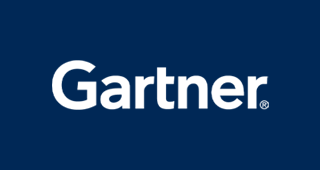Business Architecture Body of Knowledge Bizbok

BIZBOK stands for Business Architecture Body of Knowledge. Acronyms and words can be fun, but what does BIZBOK really mean for enterprise business leaders?
BIZBOK represents a framework of best practices and disciplines for business architects. A business architect is a leader responsible for injecting reliable infrastructure into the business a la corporate strategy and foundational technology.
The framework known as BIZBOK is to business architects what ITIL is to IT leaders. A lean, application model, agile enough for a number of enterprise operations and practical enough to become the industry gold standard.
In this article, we're going to cover:
- Business architecture: definition and utilization;
- BIZBOK definitions and practices;
- And how BIZBOK can be applied to your business.
If you're considering operating your business using BIZBOK principles, you don't want to miss this blog.
Business Architecture
To understand why BIZBOK is important, one must look at the role BIZBOK plays in creating a functioning business architecture.
Often referred to as a blueprint, business architecture promotes a common understanding among interested parties of the enterprise. It is a practical wireframe used to tie business objectives to demand.
The foundation for business architecture and the implemented best practices that we'll explore further below have some recognizable traits. These include:
- Business architecture must represent a business.
- Business architecture must represent the enterprise, as a whole, including parts that have been outsourced as well as abstract concepts like interests and demands.
- The representation of these basic elements is referred to as an abstraction.
- Abstractions relate to each other in a number of ways, and in business architecture, mapping is the process of showing those connections.
- Business architecture lets stakeholders understand the real operations of the business and how they interact with one another.
Business architecture commonly answers the who, what, where, when, why, and how of day to day operations. BIZBOK is a framework of business architecture methods, best practices, and disciplines that answer the question, "How do I create successful business architecture?"
What is BIZBOK?
In short, BIZBOK helps you define your business architecture, which is optimal for business operations. As mentioned, BIZBOK is an acronym for Business Architecture Body of Knowledge. It's a popular framework of business architecture best practices designed by the Business Architecture Guild. It offers detailed disciplines for enterprises to perfect their business architecture in terms of transparency, offering insight on how abstractions tie to business goals and objectives, allowing organizations to achieve greater success.
The guide is an evolving document that helps business architects overcome a number of common enterprise challenges, and some less common ones too. The guide is flexible enough that it can be used from enterprise to enterprise in different ways, meeting the unique needs of each business.
BIZBOK is currently in version 7.5 and is available through the Business Architecture Guild, or via a relationship with a BIZBOK experienced consultant.
Abstractions, Domains & Blueprints
Of note, three important elements of BIZBOK exist: abstractions, domains, and blueprints.
Abstractions, as mentioned above, are the formal representation of the business. These visual representations comprise of domains. The domains are the individual units that represent concepts in operations, like strategy and metrics.
An abstraction shows the connections between several domains with interlocking goals and outcomes. Domains challenge leaders to think of their business broken down into units. Once the units are defined, they can be transformed into domains that make up an abstraction of the business architecture.
Stakeholders will also be challenged to derive four insights from every domain:
- Organization
- Capabilities
- Value streams
- Information
What these insights have in common is that they all rely on one another to be successful. Blueprints help stakeholders hone in on the most important parts of the abstraction, answering a specific question or resolving a scenario. In effect, they make sense of abstractions and domains by adding context.
Modeling Techniques
There are a number of modeling techniques to guide business architects through successful business architecture issues. Some common options are below:
Business Strategy Mapping
Business strategy mapping focuses on overarching strategy and how it relates to outcomes and objectives.
Capability Mapping
Capability mapping provides direction via definition, development, utilization, and benefits of business capabilities in important business areas, like planning. The BIZBOK outline details the steps required to build a capability map and the connectedness between those capabilities and other parts of the enterprise.
Value Mapping
BIZBOK introduces value mapping by outlining, "the definition, benefits, development, and use of value maps within the context of business architecture." It also includes disciplines of value stream mapping and how value maps assist with planning initiatives, like digital transformation.
Organization Mapping
Organization mapping affects an enterprise's infrastructure. It takes into account the business structure and stakeholders. BIZBOK provides robust information on mapping the business unit as a whole.
Information Mapping
Information mapping is foundational in 2019 enterprises. The BIZBOK guide is an important document, highlighting the importance of information architecture within the business architecture as the core of many important processes and metrics.
Initiative Mapping
Much like it sounds, initiative mapping provides opportunities for stakeholders to visualize business initiatives in an environment where broad context can be applied.
Product Mapping
Product mapping shows how products and services intersect with one another and other aspects of the business.
Stakeholder Mapping
Stakeholder mapping shows the alignment between the stakeholder concept to the organization's existing value streams–an important concept, for shaping the direction of an enterprise in terms of goals and objectives.
BIZBOK For Your Business
If you haven't applied business architectural models as part of your overall business strategy, it's not too late to start, and, in fact, you should plan on it!
A solid strategy for business architecture will offer visibility into the related parts of the business, top-down transparency and context that allows for a more effective business. BIZBOK is available to members of the Business Architecture Guild and can be both taught and learned.
The guild itself doesn't offer training to members, however. Training must come from guild stakeholders or other members invested in your success, which is why membership is so handy for some.
Access the 2021 Gartner® Magic Quadrant™ for ITSM
The Gartner Magic Quadrant for ITSM is the gold-standard resource helping you understand the strengths of major ITSM software vendors, insights into platform capabilities, integration opportunities, and many other factors to determine which solution best fits your needs.

These postings are my own and do not necessarily represent BMC's position, strategies, or opinion.
See an error or have a suggestion? Please let us know by emailing blogs@bmc.com.
BMC Bring the A-Game
From core to cloud to edge, BMC delivers the software and services that enable nearly 10,000 global customers, including 84% of the Forbes Global 100, to thrive in their ongoing evolution to an Autonomous Digital Enterprise.
Learn more about BMC ›
You may also like
About the author
![]()
Stephen Watts
Business Architecture Body of Knowledge Bizbok
Source: https://www.bmc.com/blogs/bizbok-introduction/#:~:text=BIZBOK%20stands%20for%20Business%20Architecture%20Body%20of%20Knowledge.&text=BIZBOK%20represents%20a%20framework%20of,corporate%20strategy%20and%20foundational%20technology.